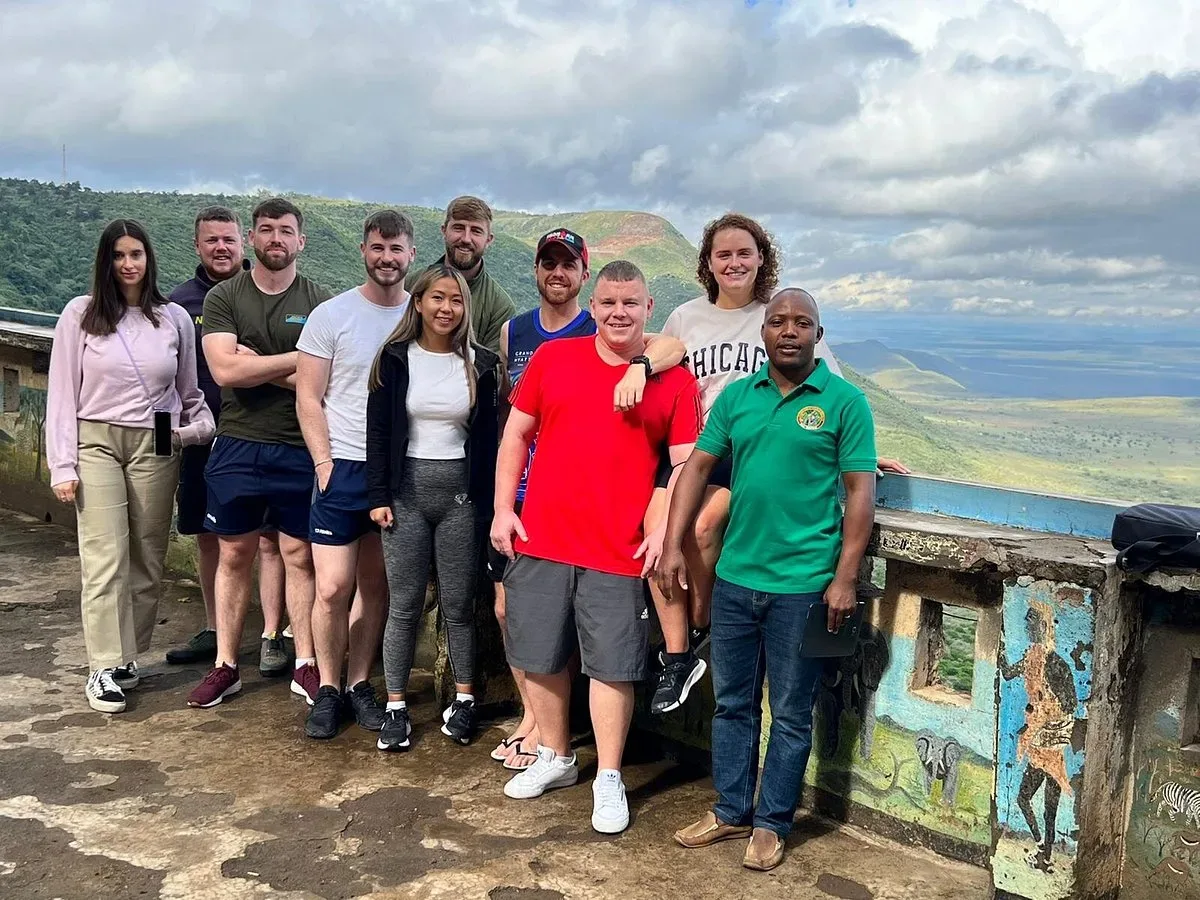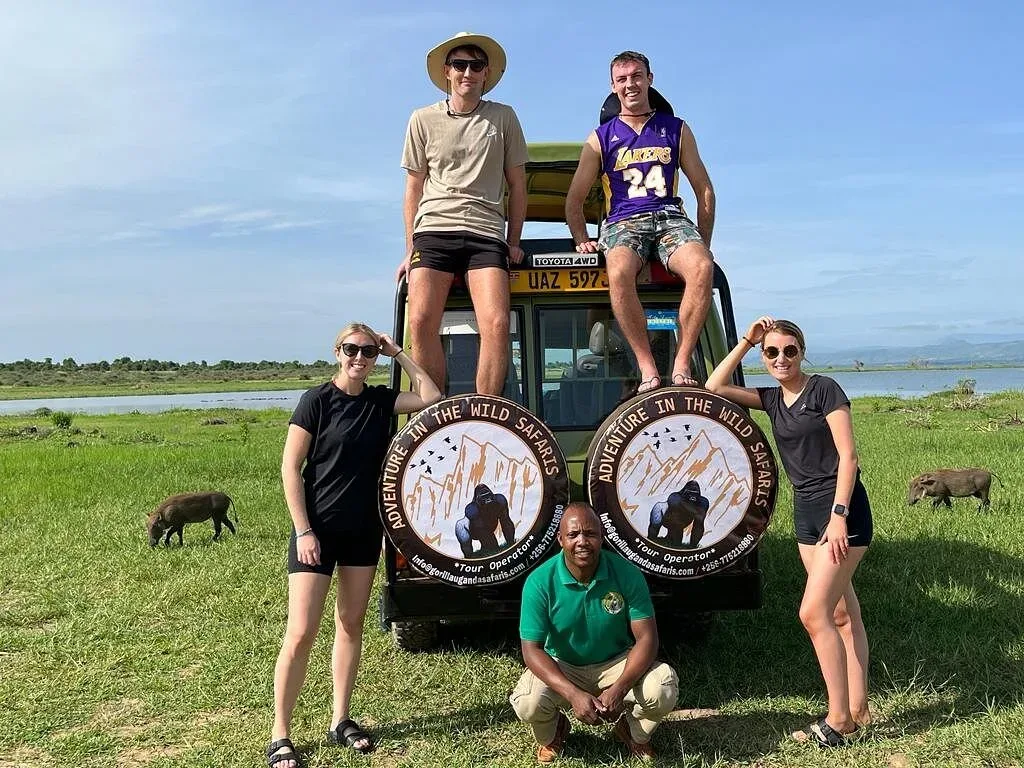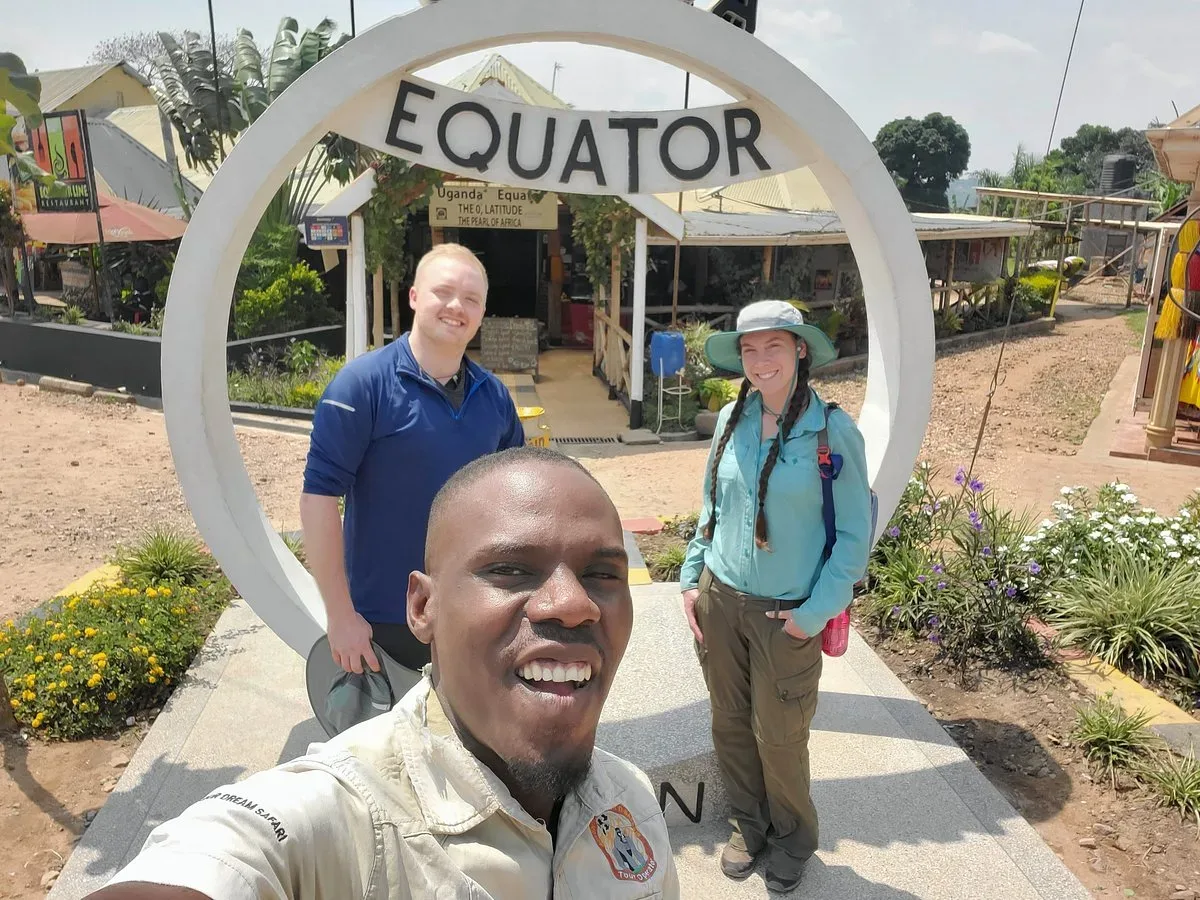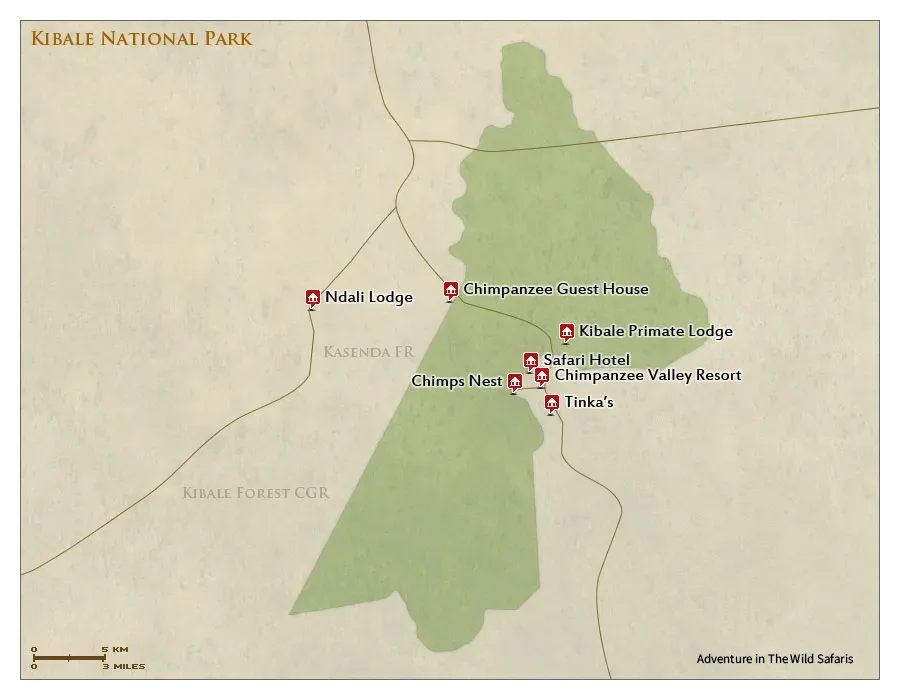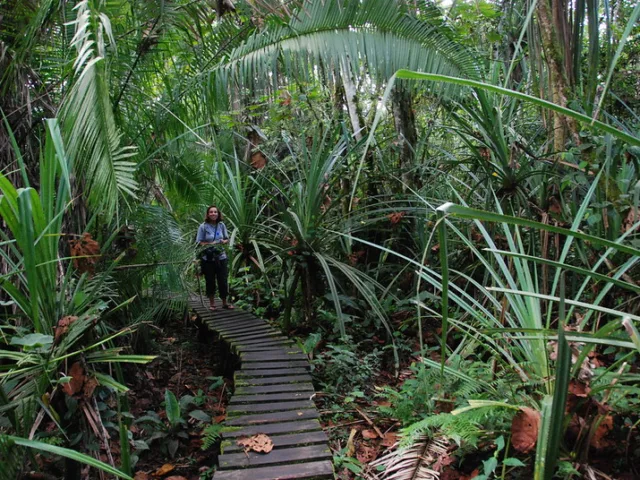Kibale National Park | Kibale Forest | Chimpanzee Trekking | Uganda Safaris | Wildlife Safaris | What Do Chimpanzees Eat | Primate Tours
Kibale Forest National Park
The Primate Capital Of The World
Kibale Forest National Park is one of the top tourist attractions to protect and provide the ability to trek through the Kibale forest to find the chimpanzees of Uganda & many other primates
Kanyanchu Primate Walk
Kanyanchu Chimpanzees
Kanyanchu Primate Walk is the most famous activity for Chimpanzee habituation & Chimp trekking and it happens in the Kibale forest with the greatest chimpanzee experience ever
Popular Chimpanzee Trekking Safaris In Kibale Forest
Guide To Kibale Forest National Park
Chimpanzee Habituation | Chimp Trekking | Kibale Forest | Bigodi Wetland Sanctuary
Kibale Forest, The lush tropical forest, is a home to a number of primate, birds and other wild life species seen in the park. Kibale forest national park, has become Uganda’s top tourist destination offering the unique chimpanzee trekking experience.
The Kibale forest is also a home to many other primate species sighted during the chimpanzee trekking in the forest including; Black ad white colobus monkeys, olive baboons, red-tailed monkeys, Grey cheeked mangabeys, Lhoest; s monkeys, pottos among others.
Kibale forest national park is located in western covering an area of about 792 square kilometers, comprising of a tropical rain forest, the parks annual temperature ranges between 14-27C.
It is generally cool making the ultimate place for chimpanzees and the perfect spot to do chimpanzee trekking where it derives its name as the “primate capital of East Africa” with 13 different primate species.
Kibale forest is home to more than 1,450 chimpanzees being protected in the tropical forest. It is by far the best place to see Chimps in East Africa.
The park has got habituated chimpanzee groups from which tourists have a chance to see the apes in their natural habitat.
Chimpanzee trekking is done by adults and only children above 15years are allowed to take part in the activity and if they are younger, they can opt to see chimpanzees at Ngamba Island Chimpanzee Sanctuary located at Entebbe off Lake Victoria.
Things to do in Kibale forest National Park
The things to do in Kibale forest National Park are the key features that bring many travelers to visit the park, due to the many attractions, the park has got a number of activities to do during your safari visit in the park.
The park is rich in biodiversity with the thick forest being a home to over 13 primate species and 70 species of mammals.
The park has got the highest number of chimpanzees which has made it the most visited national park for chimpanzee trekking.
Besides the chimpanzees, the park has got also other primate species seen during the chimp trek in the forest including; the black and white colobus monkeys, pottos, Grey cheeked mangabey, red-tailed monkeys, Lhotse’s monkeys, olive baboons among others.
The park has got also many other animals such as red and blue duikers, bushbucks, sitatungas, bushpigs, giant forest hogs, common warthogs, and African buffalo, leopards, African golden cats, servals, different mongoose among others. Which can be seen during the hike or the nature walks in the forest.
Due to the rich biodiversity ranging from the to primate species, the tropical forest created different activities to be done during your visit in the park.
Some of the activities in the park include; the famously known chimpanzee trekking, chimpanzee habituation where you get to view the apes for about 4 hours.
Bigodi swamp walk which is the perfect spot for bird watching, nature walks/ Hiking in kibale, creator lakes and the cultural visits to the nearby communities living closer to the park.
Kibale Forest National Park, is the top tourist destination for primate safari and the park offers number of activities to be done which include;
Chimpanzee Trekking Experience
Chimpanzee trekking is the highlight of many safaris in Kibale forest national park, chimp trekking involves seeing the habituated chimpanzee groups in their natural habitat.
Typical Chimpanzee Trekking Safari
The activity starts with the briefing at the park headquarters by an experienced ranger guide about the dos and the don’ts of chimpanzees trekking while in the forest.
After briefing, you will be assigned an experienced ranger guide to help locate the chimpanzees for you, and one hour is given to you to be with them to watch them play, and feed young ones among other daily activities.
To be able to track the chimpanzee, one must be an adult, and only children of 15 years and above are allowed to take part in chimpanzee trekking if they are younger, they can opt to see chimpanzees at Ngamba Island Chimpanzee Sanctuary located at Entebbe off Lake Victoria.
The sanctuary has a raised platform from which children can stand and the chimpanzees are below them.
Kibale National Park, offers two shifts for chimpanzee trekking every day, one in the morning and one in the afternoon because the terrain of the forest is not too challenging compared to the often-grueling terrain of gorilla trekking in Bwindi Impenetrable National Park.
The exercise takes about 1-4 hours depending on the location of the chimps on that particular day since wild animals tend to move a lot.
To track the chimpanzees in Kibale forest, one must have a tracking permit which acts as a document allowing you to see the chimpanzees in their natural habitat.
How to book chimpanzee trekking permit
To get the permit, you can book through Uganda Wildlife Authority a body governing all the national parks in Uganda or you can also book the permits by a registered tour operator company that will assist you in booking the permit for you before chimpanzee trekking.
The permits are booked early before your actual date since most times they get sold out.
Cost of Chimp Trekking permit
The chimpanzee tracking permit costs 250 dollars per person per permit for foreign residents, foreign residents costs, 200 dollars per person, and 180,000shs for East African Community per person to track the Chimpanzee.
Note: Chimpanzee trekking, can be done all year round but the perfect time to do the activity is during the wet season.
Despite the mud, It makes it easy to locate the chimps since the lush vegetation has grown for the chimps to feed on thus, they do not mover dipper into the forest compared to the dry season.
Chimpanzee Habituation Experience
The chimpanzee habituation experience allows one to spend 4 hours with the chimpanzee in their natural habitat, compared to normal chimpanzee trekking.
Chimpanzee habituation is a process of slowly introducing the chimps to the presence of humans. During the habituation, the ranger guide is involved; therefore, he or she understands the behaviour of. the chimpanzee.
Kibale Forest National Park has habituated chimpanzee groups, which allows you to participate in the activity.
The exercise starts in the morning with a briefing at the park headquarters and you will be assigned a ranger to lead you into the forest.
Compared to chimpanzee trekking, chimpanzee habituation allows you 4 hours to be with the chimpanzees and thus gives you value for your money.
The chimp habituation permit is slightly higher compared to the chimp trekking permit; the permit goes for 300 dollars for foreign non-residents, 250 for foreign residents, and 250000 for the East African Community. The permits are per person, per permit.
Chimpanzee Habituation In Kibale forest National Park
Kibale Forest National Park has become one of the most visited national parks in Uganda for primate safaris.
The park is one of the few national parks that offers both chimpanzee trekking, where you get to spend one hour with the gorillas, and chimpanzee habitat, where you get to do the activity the whole day.
Chimpanzee Habituation, is a process by which chimpanzees are made to get used to the sight of people.
The process normally lasts for two years to complete. The habituated chimpanzee groups do not get aggressive when they see people since they are used to seeing people around them every day.
Chimpanzee trekking and habitat can be done all year round.
The travellers are allowed to see the chimpanzee every day all year round, regardless of whether you have booked your chimpanzee tracking permit based on your time and dates of travel.
The activity is done during the wet season, despite the mud. The dry season is a bit longer since the chimpanzees tend to move a lot deeper into the forest in search of food.
During the wet season, the green vegetation grows, thus helping the chimps find food within their reach but never the less, you can still track the chimps even in the dry seasons.
To track the chimpanzees, one ought to have a chimpanzee trekking permit and you are required to book the permits one month in advance prior to your tracking dates.
Tracking or chimpanzee habituation permits are limited, depending on the habituated groups. A maximum of 6 people are allowed to track a particular group in a single session.
Travelers are not allowed to be in the forest alone; each group is assigned an experienced ranger guide to lead them into the forest.
The guide has knowledge of where to locate the chimps, following the clues left behind. For habituated chimpanzees, they are familiar with the faces of the guides, so they can rest assured of no danger.
While on a chimpanzee trekking session:
You are escorted by armed rangers/guards to keep security in case of an attack from other wild animals like buffaloes and elephants that may pose a danger to visitors by shooting in the air.
The guides may also start by looking for them around the area where they were the previous day.
Tracking chimpanzees can take from one to six hours, depending on the location where they were the previous day.
However, locating the chimps shouldn’t be difficult compared to mountain gorillas, which are relatively quiet with occasional barks from the dominant male.
Behavior Of Chimps Expected
Chimpanzees are very stubborn, unruly, and noisy. Trackers locate them by their hoots and loud barks. Once you locate a group, you will follow them for a long time through hills, dense forests, and vegetation.
The chimps may take a while before descending from the trees and settling down on the ground; therefore, you will wait for them to descend on the ground.
You will get several opportunities to take good photos and observe their individual behavior and character, among others.
The chimpanzee habituation is a whole day’s exercise with the chimpanzee, while chimpanzee trekking has two sessions both morning and evening.
Chimps are more active in the morning than in the evening; during the morning, they are out feeding and hunting, which makes it easier to locate them, while in the evening, they rest in the woods, hiding from the heat of the sun.
Note: Chimpanzee habituation requires you to wake up early since the exercise normally lasts for the whole day depending on the location of the chimps, and also because the morning hours are the best time to catch up with them before they leave their nests for their daily activities such as feeding young ones, guarding territories, and building nests, among others.
Lunch is usually provided since the trek may last for a much longer time. The exercise ends when the chimps have retired into their hiding nets.
Our 3-day Chimpanzee Habituation in Kibale Forest will be a great experience to be with these primates in their natural habitat.
Bigodi Nature Walk, Bigodi Wetland Sanctuary
After the day’s chimpanzee trekking, you may opt for the Bigodi wetland sanctuary walk. This is the perfect spot for an excellent bird-watching and primate safari experience.
The sanctuary is a habitat for many other primate species seen during the walk in the swamp, including the rare and colorful birds, colobus monkeys, and other small mammals like otters that live in the swamp.
Chimpanzees are also known to visit the swamps. If you are lucky, you may catch a glimpse of them, so keep your binoculars ready.
The Bigodi Wetland Sanctuary is a community-based tourism organization derived from the community.
The money from the sanctuary flows back into the local community, where it’s used to build schools, support women’s groups, and improve water and waste management access, which has helped improve people’s standards of living in the community.
A visit to the Bigodi Swamp is usually a three-hour activity and is done after chimpanzee trekking.
Getting there
The best and most efficient way to get to Kibale Forest National Park is to book your safari trip with one of the registered tour companies.
You can book your safari with adventure in the wild safaris, where our company driver will pick you up from the airport or hotel in Kampala or Entebbe and drive to Kibale Forest National Park.
You can also hire a car and self-drive to Kibale, which will require you to use an updated map to find the park’s location or use a bus via the Kampala-Fort Portal route.
The bus travels daily to Kibale via Sebitoli along Kamwenge Road to the Kanyanchu Visitors Center.
However, you can also fly to Kasese from Entebbe using the Aero link and then hire a special vehicle that will drop you off at Kanyanchu in Kibale National Park.
All About Kibale
Popular Safaris
- 10 Days Kibale Forest Chimp Trek
- 15 Days Kibale Primates Safari
- 20 Days Unique Primates Of Kibale
- 8 Days Chimps & Red Tail Monkey
- 7 Days Kibale Birding In The Forest
- 25 Days Colobus Monkey Kibale
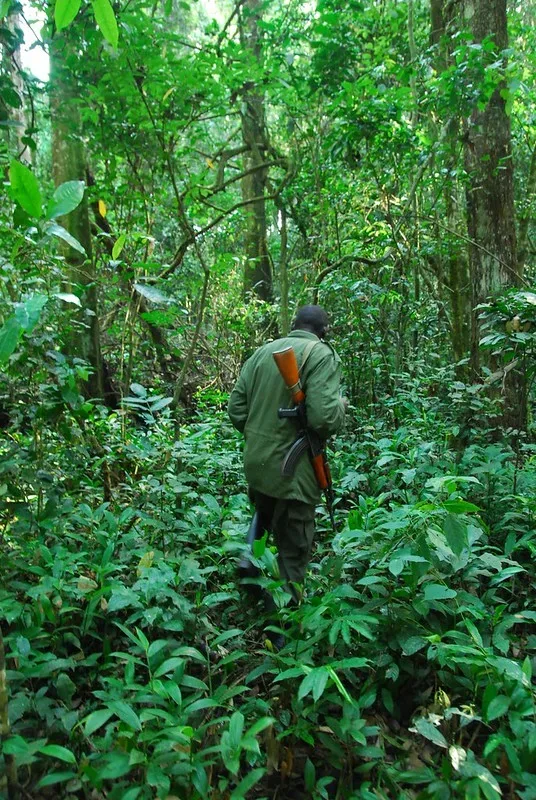
Frequestly Asked Questions About Kibale Forest National Park
Since that chimpanzee trekking is a popular tourist activity in Uganda, it is given a lot of attention, is well-organized, and has adequate protection to ensure that all visitors hiking to see chimpanzees remain secure throughout their journey.
In July 2024, the cost of chimpanzee tracking permits in Kibale National Park will change to $250 for foreign non-residents, $200 for foreign residents, and UGX 180000 for East African citizens.
The cost of a chimpanzee habituation experience permits in 2024 will change to $300 for foreign non-residents and $250 for foreign residents, but East African citizens will only pay UGX 250,000.
Kyambura Gorge tracking permits cost $100 per person for foreign non-residents and $80 for foreign residents for each expedition.
The chimpanzees awaken at 6 am, and the experience lasts all day until they make new nests and retire for the night around 7 pm. You may observe them going about their daily business as they feed, hunt, patrol the area, relax, and take care of the young.
- Insect repellent.
- Torch and spare batteries.
- Wet wipes.
- Water bottle.
- Binoculars and camera, lenses, etc.
- Comfortable walking/hiking boots and socks.
- Gardening gloves and face mask for gorilla trekking.
- Sandals/walking shoes.
- Walking stick
The main draw of Kibale National Park is its chimpanzee population, and it is regarded as the best location on earth for chimpanzee tracking. The ultimate feature for visitors to this park is chimpanzee tracking. The likelihood of sighting them has increased to over 95% over the course of several years of conservation and habituation. It also has many other primates that live in the kibale forest
In Kibale National Park, there are two chimpanzee trekking shifts per day, one in the morning and one in the afternoon. Chimpanzee trekking may take between 3 and 5 hours in the jungle, with a maximum of 6 individuals per group, depending on the forest’s circumstances. You proceed down the same path where the chimpanzees were last seen.
The chimpanzees can only remain with you for an hour after you find them so they may keep eating. They require unhindered feeding time.
Although chimpanzees are typically vegetarian, they occasionally consume monkeys in times of great scarcity and drought. This is especially unusual in a park with as much flora as Kibale Forest.
The Uganda Wildlife Authority oversaw the chimpanzee tracking laws and regulations. You should be aware of these instructive guidelines before entering any chimpanzee tracking forest trailheads, thus the laws and regulations that must be obeyed are listed below.
- When going on your first chimpanzee tracking safari, you should always pay attention.
- Follow your guide’s directions at all times, travelers.
- 7 meters should separate you from these vulnerable chimps.
- Eat and drink away from the chimps.
- It is a good idea to always have a camera on hand. You can take as many pictures as you like with it, but avoid using flash because chimpanzees are scared of it.
- One hour is provided to the trackers to appreciate their distinctive good looks.
- Those who are ill are not permitted to see the chimpanzees since they might contract the same illness as you since we share nearly all of our DNA (98%) with them.
- Because we share nearly the same DNA (98%) as chimpanzees, sick travelers are not permitted to visit because they might catch the same illness that you do.
- Chimpanzee tracking requires a minimum age of 15 years.
- Chimpanzee tracking experiences are only open to a maximum of 8 participants.
- Smoking is not permitted in the great apes’ native environments.
- A guide should always be with the traveler.
- The chimpanzees may get hostile toward you or perhaps kill you if you pursue them.
- Chimpanzee tracking requires at least 15 years of age to participate.
- So that you can see more, you should keep your voice at a low volume.
- If you need to relieve yourself, go off the path and then bury your waste in the ground 30 cm deep with the tissue you used.
- Don’t throw your trash in the forest; instead, follow them back.
- You shouldn’t agitate the relatives of ours.
- Chimpanzee tracking is impossible for those who are ill with the flu, a cold, or diarrhea.
- When you encounter chimpanzees, remain in the group and keep quiet.
DISCOVER THE KIBALE FOREST
Trail The Deep Forest
Travel Stories, Articles & Tips
Why is the Bigodi Wetland Sanctuary famously Visited?
Why is the Bigodi Wetland Sanctuary famously Visited?
Bigodi Wetland Sanctuary is famously Visited - On elevated wooden walkways, travel through the swamp where you can spot some unusual and colorful...Exploring Kidepo Valley National Park
Exploring Kidepo Valley National Park Kidepo Valley National Park is located in North Eastern Uganda near Karenga in the Kaabongo district. The Park is approximately 220 kilometres by road northwest of...







